The Settlement Period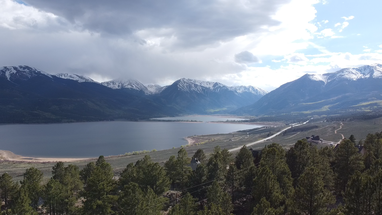
At the base of Mt. Elbert; in Lake County Colorado, you will find a picturesque valley with two massive glacial lakes puddled in the valley below the mountain's peak. This nearly deserted area is referred to as Twin Lakes Colorado and sits outside of the town of Leadville. Legends dating back to the 1800s say the lake has no bottom and has deep holes that people were lost forever in. The natural bodies of water were eventually altered by engineers, connecting the two lakes. A bit later, a 135-foot-high dam was constructed in 1896.
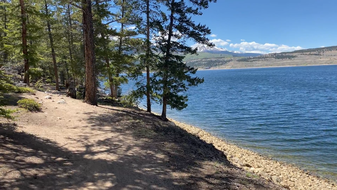
This is a very natural progression for freshwater supplies. Often, this progress threatens not only wildlife but the livelihood and living of the surrounding residents. In some instances, entire cities were flooded and to this day the spires of cathedrals and brick buildings can be found at the bottom of massive bodies of water, such as the 11-mile reservoir in “Eleven Mile State Park”. In this instance, the rising water threatened a thriving and growing resort on the Southside of the lakes.
The thirst for water was emanating 18 miles away in Leadville. As the city grew residents became eager to escape the noise and smoke of the bustling city. Vacationers began flocking to the peacefulness of Twin Lakes. 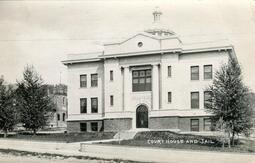 Dayton Court Hours Dayton Court Hours
In the mid-1860s, on the north side of Twin Lakes, a mining camp called “Dayton” once existed. For a brief time, the camp served as the county seat of Lake County Colorado. The mining camp attracted some of the earliest visitors to the area. Some of the more well-known visitors were Wheeler’s and Hayden’s geological surveys. Who proved the lakes were formed by pre-historic glaciers. Additionally, the famed photographer and painter William H. Jackson stayed for a time producing captivating paintings and photos of Twin Lakes.
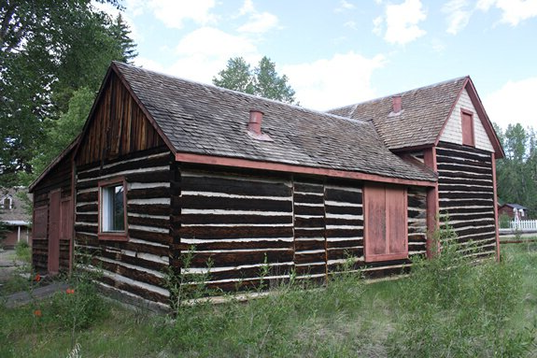 Remains of Dayton Remains of Dayton
Dayton blossomed into a budding town, boasting a Masonic Hall, post office, general store, courthouse, multiple hotels, many homes, and a milliner’s shop (or hat maker). Notably, a common feature of an early American town was absent, there was no church. Although the Masonic Hall was used by traveling priests for periodic sermons. The city was described as being hopeful for the future because its neighbor; Oro City, had mostly run out of surface gold and was losing population at an alarming rate. By 1866 Dayton had overtaken Oro City and was voted to be the county seat of Lake County. The growth and optimism of Dayton were short-lived. This is because the money that the new residents of Dayton had hoped to use to develop the mining district never came. With a lack of investment, the residents of Dayton took to working the gold lodes near Twin Lakes with only picks and shovels. These efforts were fruitless, and the mining community moved on to the next settlement, Granite Colorado. By 1868 Dayton was nearly abandoned. The commissioner of Granite decided to raise $500 to move the Dayton courthouse to Granite. For over a year, laborers moved the structure 10-miles south, brick-by-brick, where it remains today. At this time the post office recognized Granite as the replacement for Dayton.
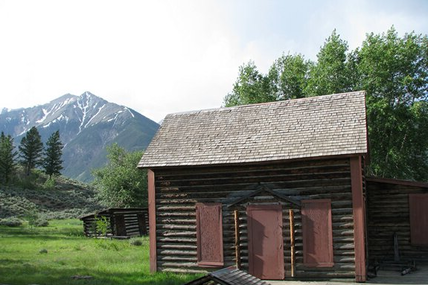 Remains of Dayton Remains of Dayton
The derelict village of Dayton remained abandoned through the 1870s. A vacationer from 1871; Annie B. Schenck wrote of her visit in a journal entry, saying “The miners are a queer impulsive set of folk. If a settlement of them find they are making some three or four dollars a day when somewhere else they can make seven or eight, the whole lot of them will pull up stakes and leave for the richer mines. Sometimes they are obliged to desert their town when the mines give out. This was the case with Dayton — the place was started by miners who dug for gold … and when the mines ceased to yield, they were obliged to go off and seek their living elsewhere. We rode among the houses, of which there were twenty-five or thirty — all log cabins with mud roofs. It was just at dusk and the place looked most dismal and forlorn in that light. One can hardly imagine anything more desolate than these abandoned villages”.
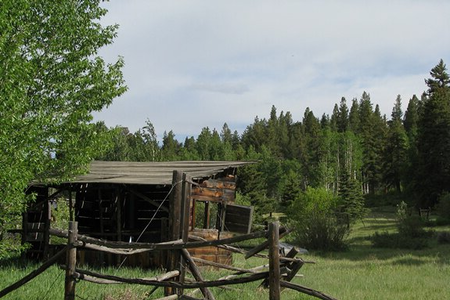 Remains of Dayton Remains of Dayton
The cabins and shops of Dayton remained empty for the rest of the decade. Eventually, the surviving portions of Dayton were replotted and moved closer to the roadway that leads to Leadville. At the time there were ten other towns with the name of Dayton and the US postal service decided the new village would take the name of its most well-known feature, Twin Lakes. Some 196 residents still call the Twin Lakes village home, as of the 2020 Census.
Despite the lack of a bustling town center, the mild climate and breathtaking scenery continued to draw visitors. In an 1876 issue of the Rocky Mountain News, a visitor identified only as “R.E.E.”, boasts about the area's offerings, saying “The lakes are an excellent place of resort for invalids and pleasure seekers. Trout fishing, hunting, and beautiful scenery offer great inducements to those who have time and money to spare, and who delight in the wild sports.”. The Growth of A Marvel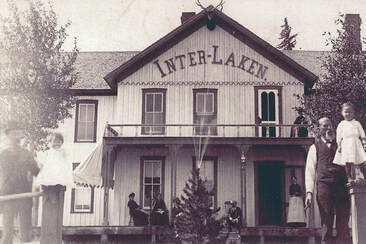
Thankfully an aspiring entrepreneur saw an opportunity to offer more than camping and abandoned bunkhouses to visitors. He set out to create a lakeside destination. Interlaken, originally named “Lakeside Resort”, was built in 1879 by John A. Staley and Charles Thomas. It started with humble beginnings, and eventually boasted a two-story hotel. The hotel was a popular mountain destination for people on the way over independence pass or nearby mining communities. The miners made their stop, and the hotel rang with laughter and music. Towering Pines sat on top of lush, carpeted lawns of bluegrass. The lawn was dotted with sparkling water fountains, gardens, and native flower beds that bloomed throughout the summer. It was designed to respond to and enhance the picturesque mountain setting.

The 1870 book, “Health, Wealth, and Pleasure in Colorado”, described the resort after Staley’s improvements; saying, “The hotel and boarding-house accommodations are good and will be rapidly extended. During the summer months, there is an almost constant round of society picnics and private pleasure parties coming down to the lakes from Leadville, so that nearly every day brings a fresh influx of visitors, enlivening the resort, and dispelling all tendency to monotony. Twin Lakes is the highest of all the popular Rocky Mountain resorts and furnishes an unfailing antidote for hot weather.”

Only 4-years after opening; in 1883 it was purchased and expanded upon by a mining millionaire from Leadville named, James V. Dexter. This was not his first foray into the resort industry. Other memorable resorts he constructed include Evergreen and Idlewild Lodge. The Interlaken resort was one of his most ambitious undertakings. After adding 2,000 acres of land, a dance hall, a log tavern, a 16-horse stable an icehouse, guest rooms with panoramic views, servant quarters, and a couple of hexagon-shaped privies that were considered state-of-the-art restrooms. This is because each of the six sides was reserved for specific guests of the hotel (accentually they were private restrooms). Additionally, they featured seldom seen amenities, such as leather seats and fragrant flowers.

In the mid-1890s Dexter constructed a personal cabin that spared no expense and is one of the most interesting structures on the property. Dexter’s “cabin” more resembled the mansions of the time, featuring imported wood trim, open verandas, gabled dormer windows, a mansard roof, and is crowned with a glass-enclosed cupola with views in all directions. In its time the cabin was outfitted with, elaborate rugs, maple furniture, and high-end décor. A décor that was influenced by Dexter's fondness for playing poker and hunting. Creating a deep, rich tone, that demonstrated Dexter’s lavish lifestyle. The building's architecture reflects Dexter’s nautical interests yet somehow does not seem out of place in the Rocky Mountains
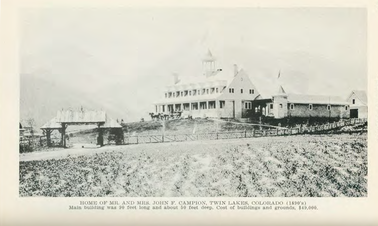
Near Dexter’s Cabin, in 1895; a man named, John F. Campion built a private summer home for his bride, that aimed to surpass Dexter’s cabin. Similar to Dexter, John also made his fortune in the Leadville mining industry, as well as, Colorado sugar beets, among other businesses. His ownership and operation of the most productive regional gold mines; the Little Jonny and Ibex mines, is what catapulted Leadville into the second-largest city in Colorado. His Twin Lakes villa was large enough to accommodate a bowling alley, electric power plant, shooting gallery, and dais stage (or playroom).
The Campion family used the stage often. Because in those days people were fond of amateur plays or as they called them “theatricals” or “charades”. As soon as you entered the door you were greeted by a series of costumes, encouraging guests to put them to good use. 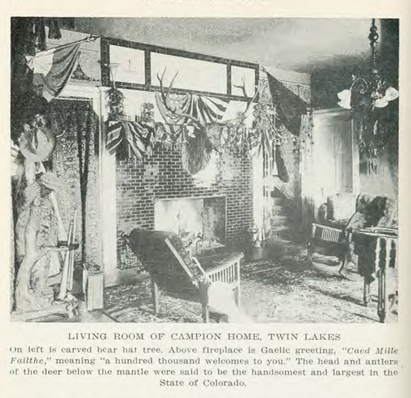
Mr. Campion was described by his childhood caretaker and long-term housekeeper; “Mrs. Edwards” in a 1959 interview with Colorado Magazine as being “a very amusing man” who “had nicknames for his friends and family”. She went on to say that Mr. Campion referred to his wife as “Flannelmouth” or “Pokey”. Other terms of endearment he used included “Fatty” for his daughter Hellen.
The villa represented the Campion family’s whimsical nature. For example, the foyer contained a large wood carving of a bear that was used as a hat rack, where Mr. Campion's hat was often perched in the mouth of the bear. Their Irish roots were proudly represented in a rough stone fireplace with a carved Gaelic saying, “Caed Mille Failthe”, meaning, “One hundred thousand welcomes”. The décor reflected their love for Swiss culture, blended with their Celtic traditions. For example, the largest painting in the living room was of the Lion of Lucerne monument in Lucerne, Switzerland. 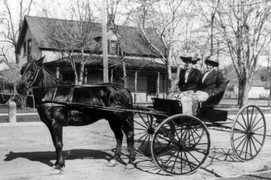 Road Wagon Road Wagon
Mr. Campion would drive his two-seat, road-wagon to Leadville Monday morning to his office and would return Friday evening. Occasionally, Mrs. Champion and Mrs. Edward would accompany him part way and walk back. Mrs. Edwards recalled one of these trips were they chased by “a big black cow”. Saying, “A few cattle were grazing loose by the road. The cow had probably never seen a woman... We all ran for our lives and made for a dilapidated outhouse with a door hanging on one hinge. We got in and held the door while the cow took out her anger on the door. We remained there for some time before the animal got tired and we were able to get out and make for the fence and home ”.
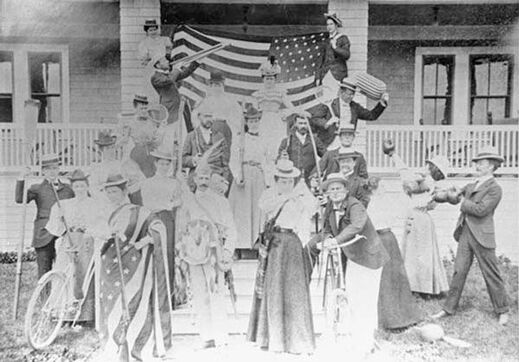 Campion Hotel Guests Campion Hotel Guests
At a certain point, Mr. Campion learned that the lower lake was to be used for irrigation and his home would be submerged by water. He promptly sold the property and left the operations to his former housekeeper, Mrs. Edwards. For a time, she put the four-teen lavishly appointed guestrooms to good use by running the home as the “Campion Hotel”. Saying in 1959, “if any of the people who were guests at Twin Lakes are alive, they can tell you of the good times at the Campion home… Some of the young men went off to the Spanish War and never returned. I imagine that all these people have passed on and that I am the only one left who remembers Twin Lakes when it was the center of social life in the Leadville area”. Before the irrigation project could be completed the Campion Hotel burnt to the ground. Leaving behind only the memories of the Campion family and hotel patrons.
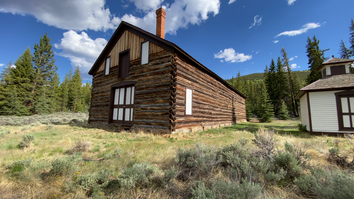 Lakeside Bard Lakeside Bard
Meanwhile, Lakeside Resort continued to improve. Its barns and stables had become like nothing else in the region, featuring a tack room, hayloft, 16-stalls, and carriage storage. Another barn: that has fallen to ruin, accommodated milk cows, chickens, and additional food storage.
At this juncture, the resort received its new name, “Interlaken”. Named after a traditional resort town in the mountains of Bernese Oberland, in central Switzerland. This is especially fitting because this region of the Rocky Mountains is commonly referred to as the “Switzerland of America”. 
Charles Dexter’s improvements created a world-class resort in the wilderness. His goal of elevating the resort to a higher class of clientele was achieved. His property rivaled the internationally recognized Broadmoor resort and the town of Aspen Colorado. The resort possessed some of the best facilities of the time and grew to become an extremely popular stop for well-to-do travelers passing through nearby, towns (Leadville or Aspen).
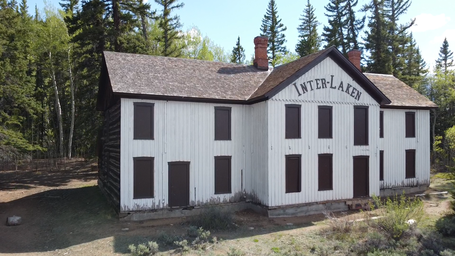
Interlaken became a destination rather than a passing stop. It was certainly the most expensive hotel in the area, charging up to $4 a day for access to the famed facilities. Flocks of people came to fish, horseback ride, picnic, play croquet, or cruise across the lakes in steam-powered boats. Visitors often relaxed in the tavern or pool hall. Where they were delighted by billiard tables with inlaid rare woods or ivory and gourmet multi-course meals. Every week during the summer the Leadville Orchestra would play in the hotel pavilion, where Civil War-themed oil paintings covered the walls. The book “Health, Wealth, and Pleasure in Colorado” said; “Even in midsummer flannels are necessary articles of apparel, and thick woolen blankets are indispensable at night”. In the early years' during summer guests journeyed by train to Granite; where they boarded a side-seated platform wagon that carried them 5-miles around the lake to the Southeastern side of Twin Lakes. A boardwalk existed to escort visitors from the wagon stop to the front porch of the hotel.
During the winter months, activities, such as skiing, skating, and sleigh riding were common amusements. As ice blanketed the lakes, teams of horses drew sleds with visitors across the frozen lake. The relative luxury coupled with the rustic mountain setting proved to be a powerful draw to wealthy families year-round. However, as we know the good times did not last… The Decline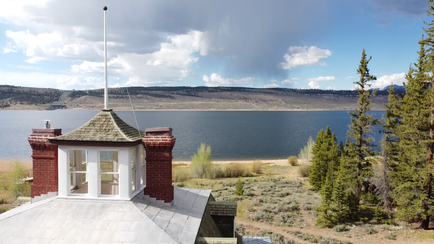 View from Dexter's Cabin View from Dexter's Cabin
Interlaken was regarded as Colorado’s most beautiful resort through the late 19th century. Dexter’s Resort successfully operated for 25 years before it began to fall out of favor after his death in 1899, eventually closing in the early twentieth century.
The first blow to the growing community was the addition of the dam connecting the two lakes in 1896. This change raised the water levels and destroyed the only roadway to Interlaken Resort. Despite being accessible by boat, this alteration caused a portion of the water to become stagnant and much of the lake was too shallow to enjoy. This change brought with it mud, mosquitoes, and an outbreak of the disease malaria. At the time this disease was the leading cause of infectious death in America. Once the word of the outbreak got out, the majority of the guests opted to protect themselves from the risk of exposure and no longer attended the resort. The flow of visitors slowed to a trickle, after 17-years of growth and 25 years of operation; the structures fell to dereliction, and this eventually led to the closure of the property by the state of Colorado, in 1950, 71 years after its founding.  Interlaken Restoration Interlaken Restoration
In the early 1970s plans to build a higher dam and expand the reservoir threatened to flood and submerge many of the abandoned structures. Fortunately, the site was placed on the National Register of Historic Places. In 1979 the Bureau of Reclamation began to record and stabilize the structures. Giving the area a new name; “Twin Lakes Historic District”.
Once the dam was complete; to avoid the rising waters, several of the structures were lifted and moved 150 feet to higher ground. The structures remained derelict in this position for another 25-years. Between the first abandonment and the relocation, almost a century had passed while the resort and its buildings were left abandoned and deteriorating. In 2001 Colorado Preservation listed Interlaken as one of the most endangered places in Colorado. That same year, a group of local volunteers began an effort to stabilize and restore the resort’s structures. The work began in 2004 and was completed in 2008 after 4-long years of hauling materials across the lakes. A New Life for Interlaken Dexter's Cabin Dexter's Cabin
Today some of the resort’s structures remain standing and hikers are invited to explore the site and tour themselves through the preserved buildings. This tour includes the six-sided privy, granaries, cabins, and hotel. One of the most well-preserved buildings; Dexter’s cabin, remains open to the public and free to tour inside and out. If you choose to visit, please enter the cabin through the front door (facing the lake), and please be sure to latch the door when you leave. The masterfully restored interior features one-of-a-kind wood floors, intricate doorknobs, a wood-paneled bathtub, and original walnut woodwork. Backcountry hikers are welcome to view the restored interiors and climb to the top where they enjoy a panoramic view of the lake from the cupola (watch your head on the way up). At one time the stable was open to the public and featured a group of old carriages and other relics. Unfortunately, this is no longer open to the public and has been cleared out.
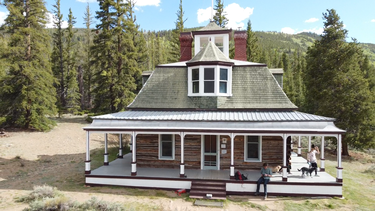
The resort site can be accessed by boat or a hiking trail that starts at the southeastern end of the larger lake. Camping is not permitted in the area. For a safe and suitable campsite please visit the Leadville Ranger District Campgrounds for a list of choices.
The hike consists of an undulating wooded path that is perched on the lake's edge and smells of wild sage and fresh mountain water. The total round trip is 4.7 miles, with an elevation gain of 760 feet. It’s a great hike for families or groups who are looking for a half-day hike with a lunch at the historic Interlaken Resort. The porch surrounding Dexter’s Cabin is a picturesque place to enjoy a picnic and the breathtaking scenery surrounding the historical structures.
Intrested in volunteering to preserve Interlaken? Visit Friends of Twin Lakes.com or email: friendsoftwinlakes@gmail.com to learn more!
Photos of Interlake & Twin Lakes
0 Comments
Your comment will be posted after it is approved.
Leave a Reply. |
AuthorThank you for visiting! This is a collection of media from the lost and abandoned corners of the world. Please have a look around, I hope you enjoy. Archives
April 2022
Categories
All
|
Libraries |
Support |
|


